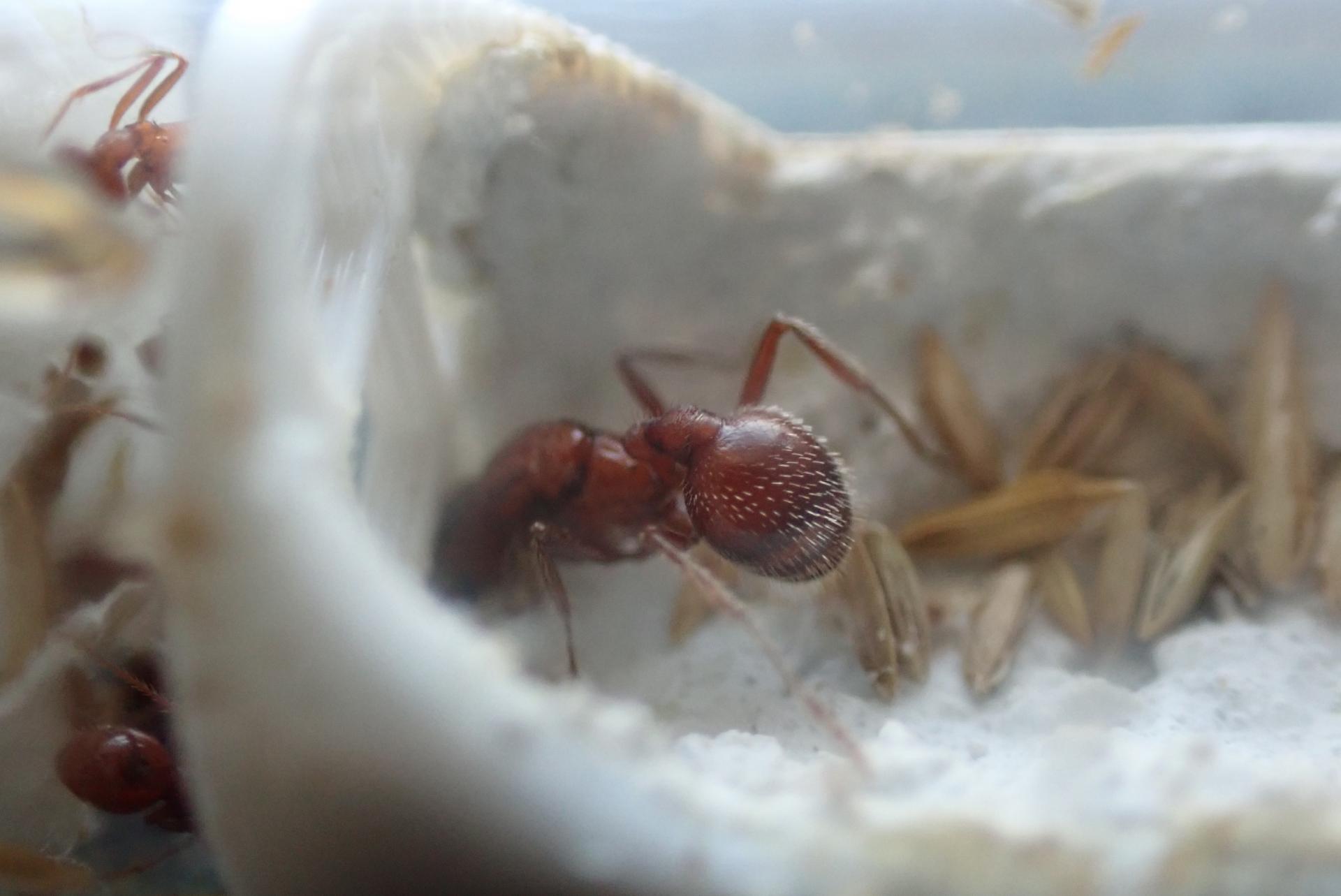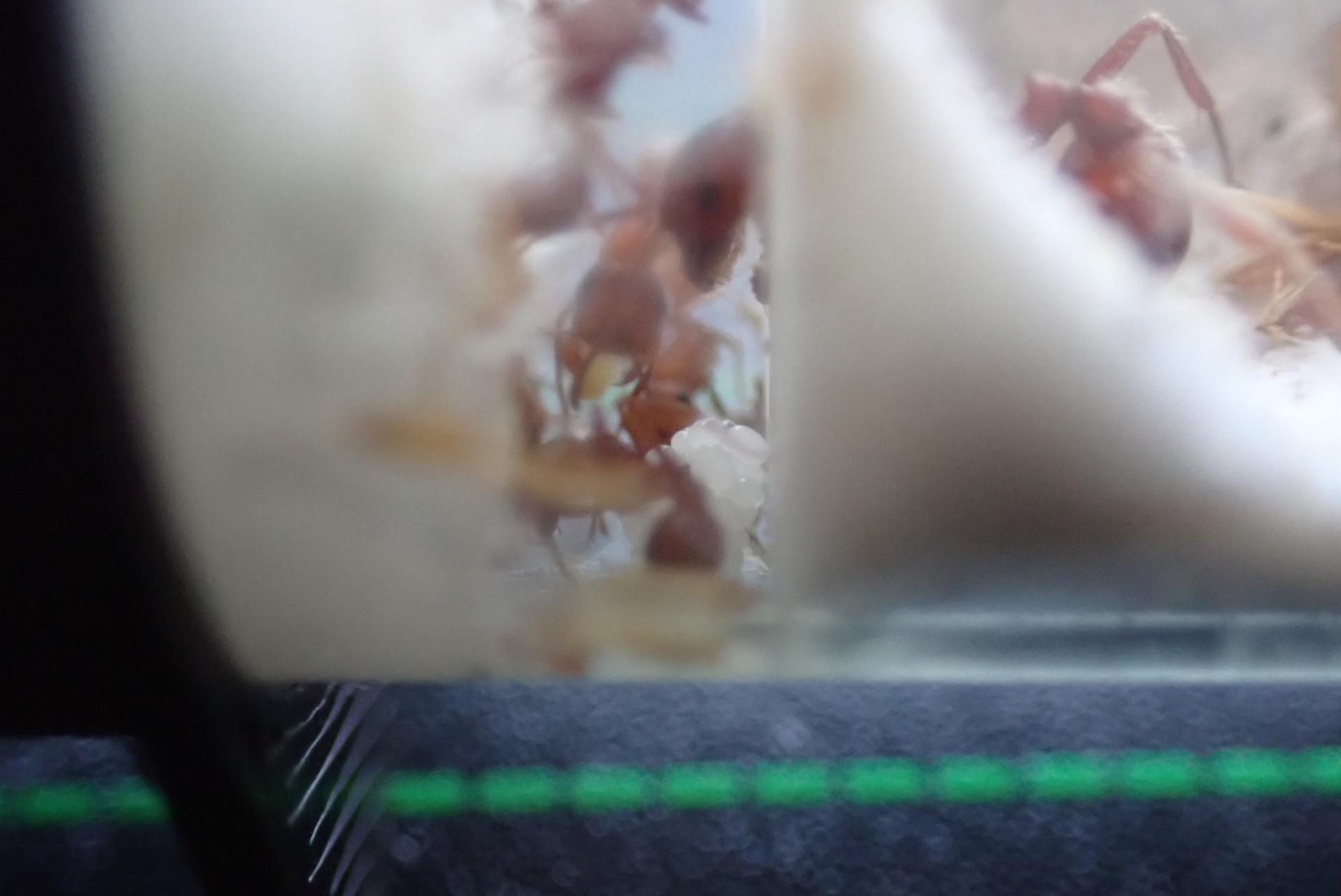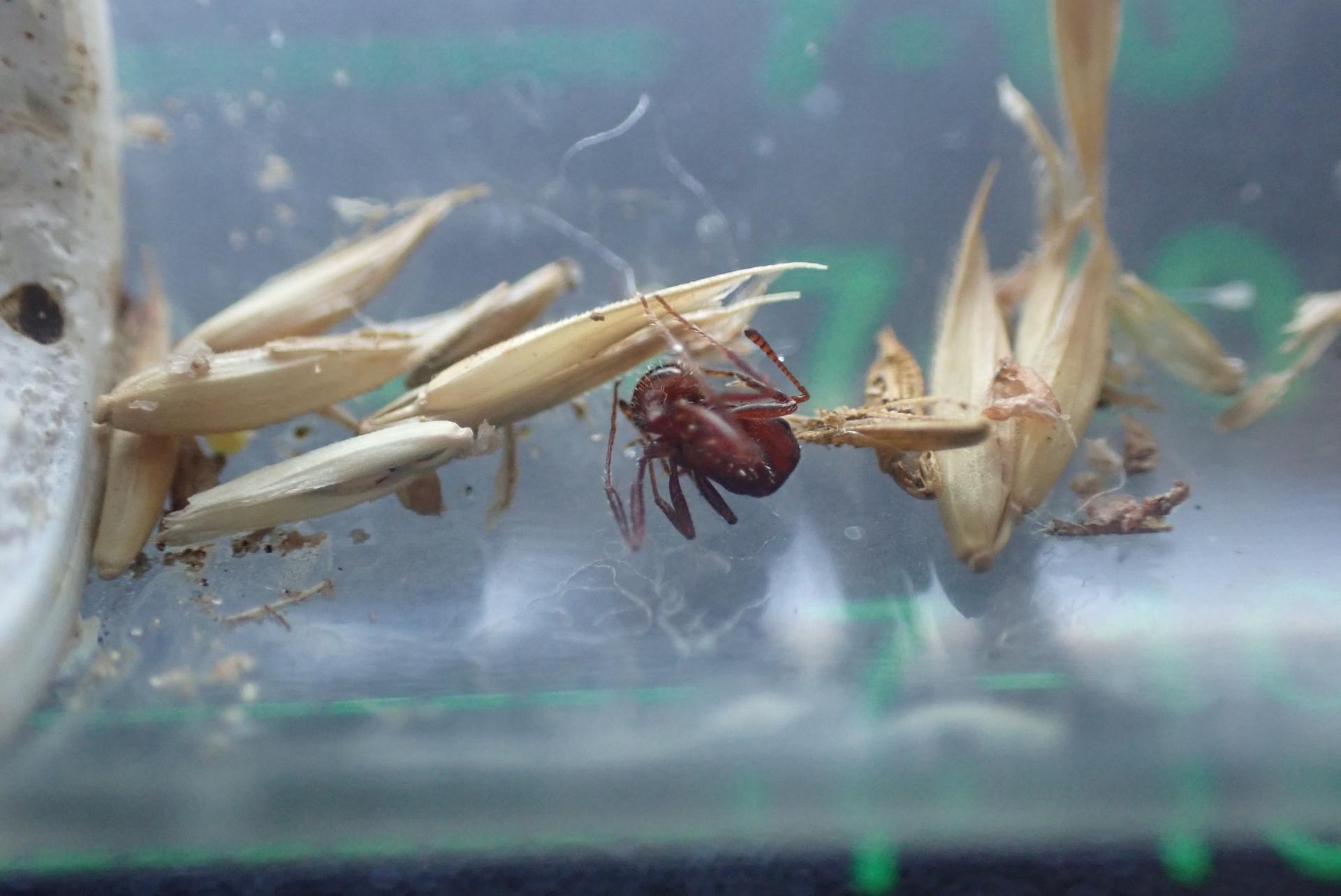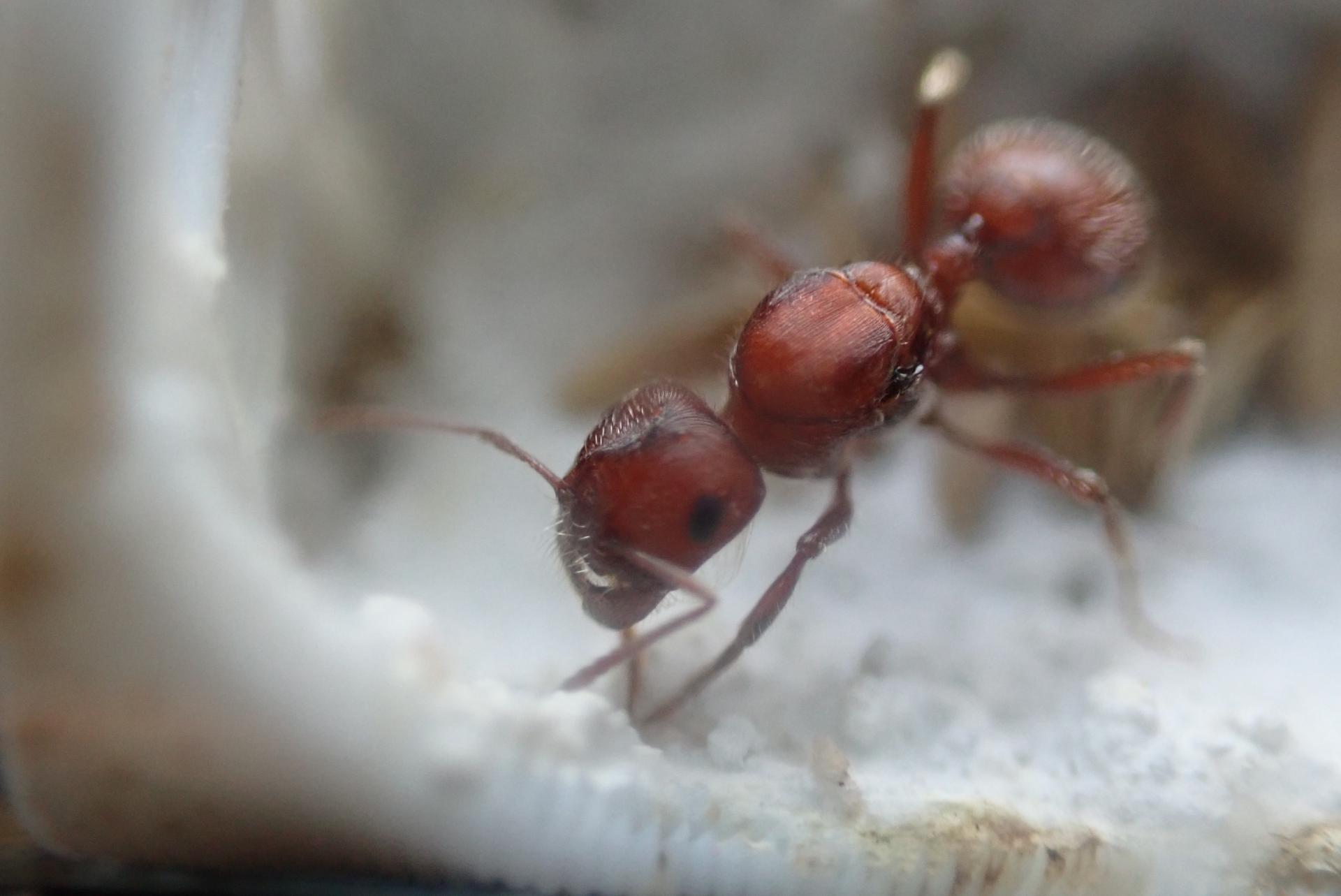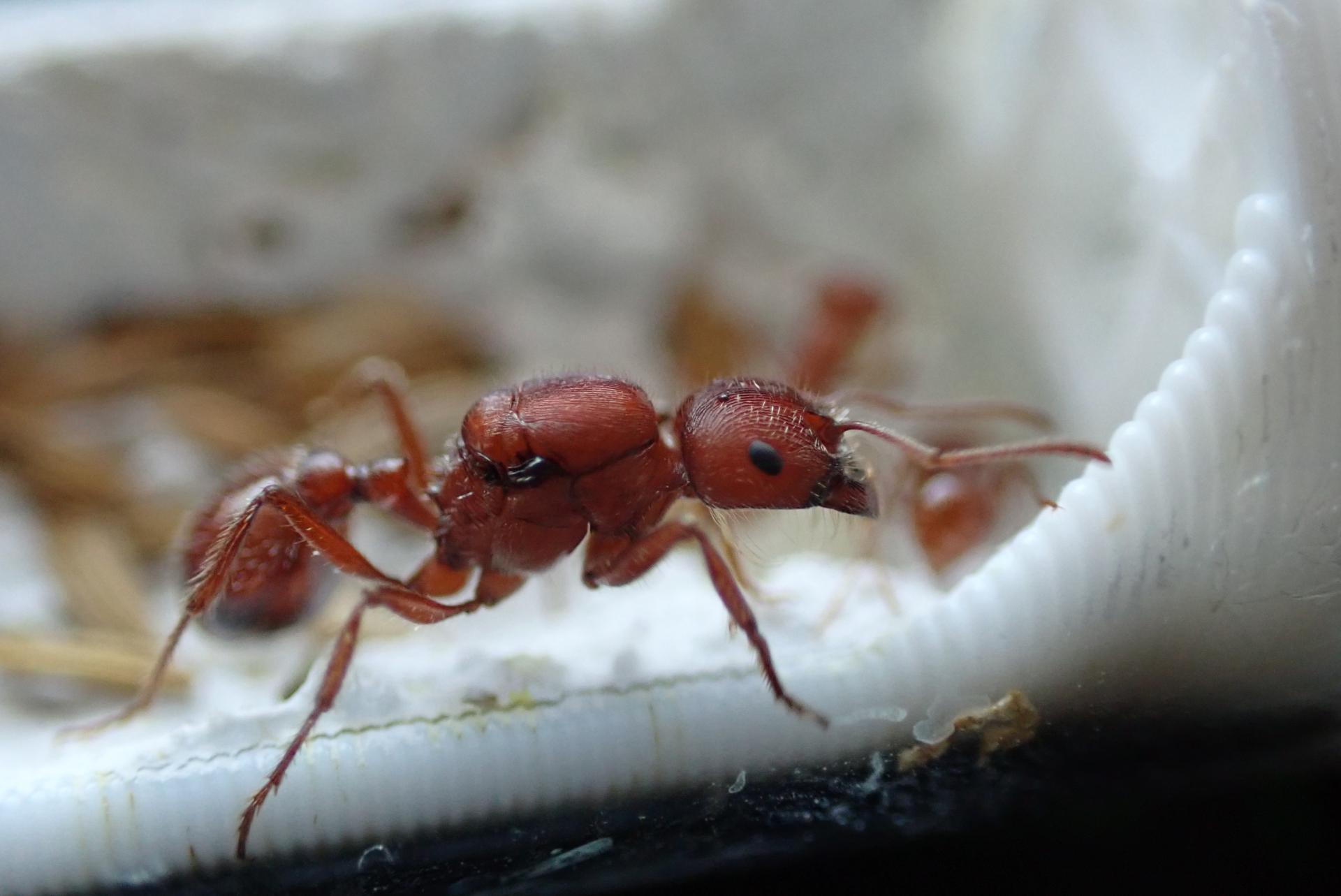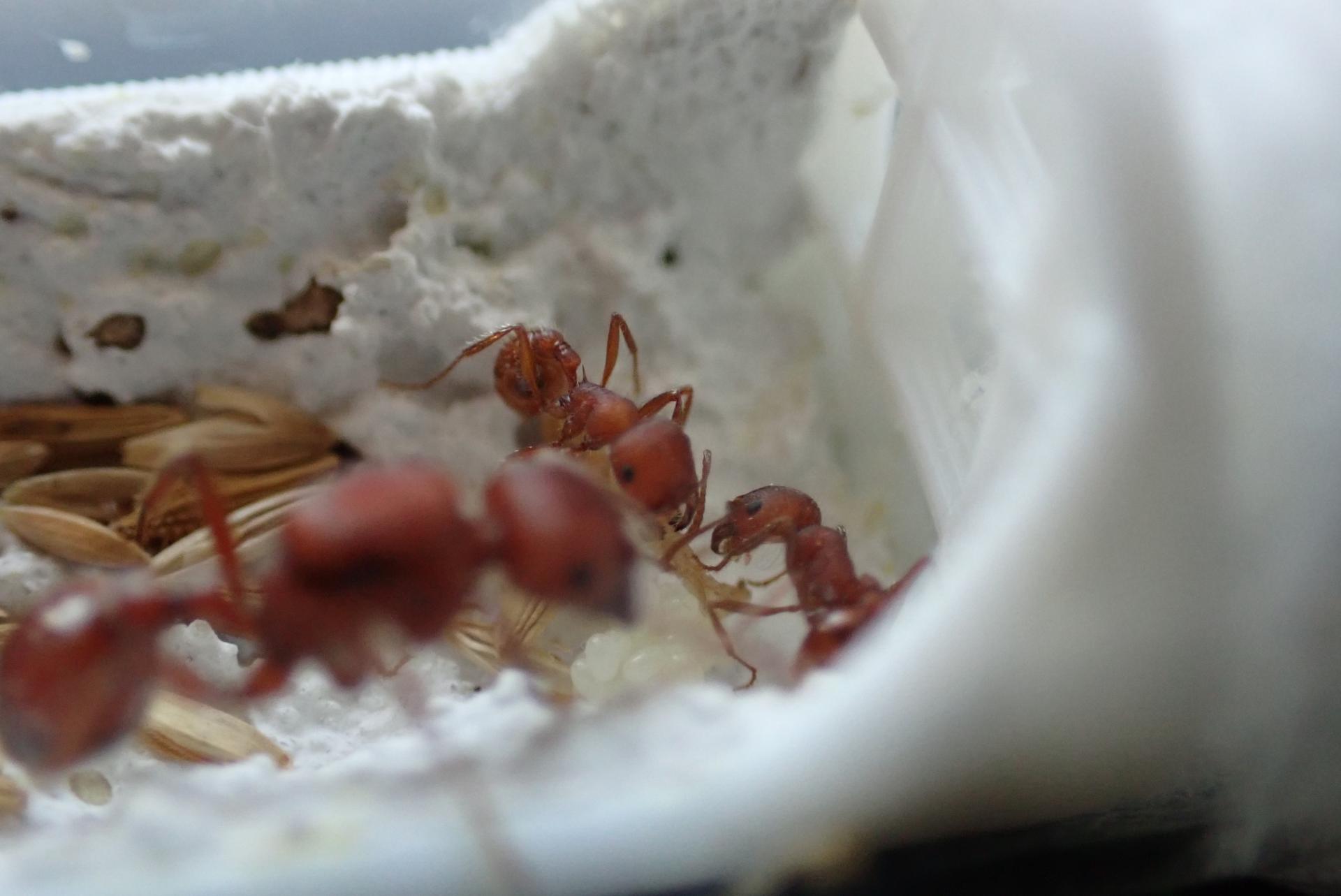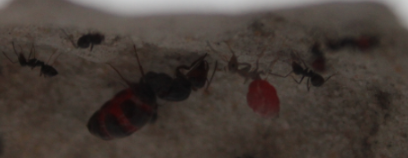Ants_Dakota's Pogonomyrmex occidentalis Journal
Entry 1: Pogonomyrmex occidentalis
10/16/2024
Purpose
To provide background, notable journals, and seed preferences for the ant Pogonomyrmex occidentalis before introducing the colonies that I currently own.
Background
Until recently, I had never purchased an ant colony in my life (and don't plan on doing so again). I have always been a find my own queen type of person because of the patience and contentment it builds with native ants, and I always encourage others to do the same. However, Utah Ants gave me a deal I could not pass down, and I love supporting sole entrepreneurs, so I found myself in possession of two colonies of P. occidentalis. As always, I shall start this journal out by encouraging every reader to keep ordinary ants in extraordinary ways, and this journal I hope shall demonstrate one avenue of doing this.
Notable Journals
RushmoreAnts has a wonderful sister journal to mine located here, which contains important background information and notable journals. I encourage you to check this out. However, I want to highlight another exceptional Pogonomyrmex occidentalis journal by Full_Frontal_Yeti, found here. It is a really good example of how to write a detailed and quality journal, and yet not be an expert. If you are thinking about creating your own journal someday, I highly recommend reading through it.
Seed preferences
While there is a detailed entry found here on Formiculture about what seeds are best to feed Pogonomyrmex occidentalis, I wanted to dig a little deeper and do a mini literature review on the subject.
As noted by the user, The Ecological Effect of the Western Harvester Ant (Pogonomyrmex occidentalis) in the Shortgrass Plains Ecosystem by Lee E. Rogers is a wonderful read for anyone keeping this species. Specifically on the topic of seed consumption, Table 20 on Page 69 is very helpful to identify what kinds of seeds these ants eat in the wild. An interesting observation by the author is that "Eriogonum effusum [Diffuse buckwheat]... represented 27% of the total number of seeds foraged." This observation prompted me to purchase a supply of a similar species for the colonies when they move out of their test tube, mainly because Diffuse buckwheat is highly native to the Great Plains and South Dakota. Could I feed them dandelion and bluegrass seeds like everyone else? Yes, but I want to keep ordinary ants in extraordinary ways, and a diet as close to native as possible is something I consider part of this. The Ant, Pogonomyrmex occidentalis, CR., associated with Plant Communities is another great resource centered around the Utah and Idaho area for observing native seed consumption. There is one specific type of seed that this research paper reveals of special note: Peppergrass. Arthur C. Cole has this to say about the sagebrush association: "In no other community do we find as many mounds so closely aggregated with one another and continually increasing in quantity. In fact, it is safe to estimate that there are approximately as many incipient colonies of the ant as there are fully developed mounds." He continues: "Mounds of occidentalis opened in this area were found to contain large quantities of Lepidiuni [peppergrass] seeds, often surpassing the number of Bromus seeds, though Bromus tectorum was extremely abundant throughout this association." I would love to hear if someone decides to feed their colony this type of seed! Because there are no tables contained in this research paper, I created a little cheat sheet covering the seeds discussed within.
Highly preferred: peppergrass, downy brome
Accepted: shadscale, prickly Russian thistle, greasewood, Sandberg bluegrass, needle-and-thread grass, Pacific serviceberry,
Rarely Chosen: alkali sacaton, inland saltgrass, Bitterroot, dwarf purple monkeyflower, Buckwheat
An interesting observation is the fact that Buckwheat is rarely chosen within these regions while it is highly selected for in Colorado in the first paper. This can possibly be explained by the research report titled Harvester Ants (Hymenoptera: Formicidae) Discriminate Among Artificial Seeds with Different Protein Contents, which explains that "The recruitment of P. occidentalis workers to five percent protein seed
Edited by Ants_Dakota, October 16 2024 - 1:54 PM.





